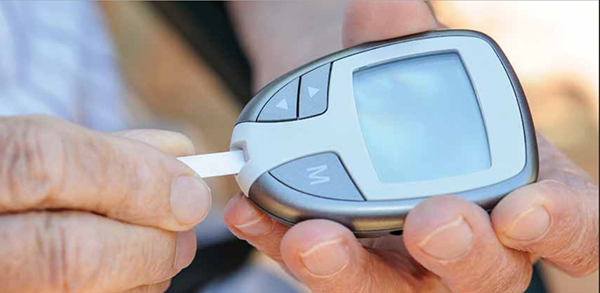


How do you choose a glucose (blood sugar) meter for home use? Ask your doctor for a rec - ommendation. Meters differ in several ways, including:
• accuracy
• amount of blood needed for each test
• ease of use
• pain associated with use
• testing speed
• overall size
• ability to store test results in memory
• likelihood of interferences
• ability to transmit data to a computer
• cost of the meter and test strips
• technical support provided by the manufacturer
• special features such as automatic timing, error codes, large display screen or spoken instructions or results
There are three ways to make sure your meter works properly:
1. Use liquid control solutions
• whenever you open a new container of test strips
• occasionally as you use the container of test strips
• if you drop the meter
• whenever you get unusual results
Check with your meter’s manufacturer about how often to use control solutions to check your meter. You will test a drop of these solutions just like you test a drop of your blood. The value you get should match the value written on the test strip vial label. Some meters require a calibration code with each new vial of test strips. Make sure you follow the calibration directions for your meter, if indicated.
2. Use electronic checks Every time you turn on your meter, it does an electronic check. If it detects a problem, it will give you an error code. Look in your meter’s manual to see what the codes mean and how to fix the problem. If you are unsure if your meter is working properly, call the toll-free number in your meter’s manual or contact your doctor.
3. Compare your meter with a blood-glucose test performed in a laboratory Take your meter with you to your next doctor appointment. Ask your provider to watch your testing technique to make sure you are using the meter correctly. Ask to have your blood tested with a laboratory method. If the values you obtain on your meter match the laboratory values, then your meter is working well and you are using good technique. If your meter malfunctions, tell your doctor and contact the manufacturer.
— Source: U.S. Food and Drug Administration
Good Neighbor Pharmacy Health Connection, January 2017